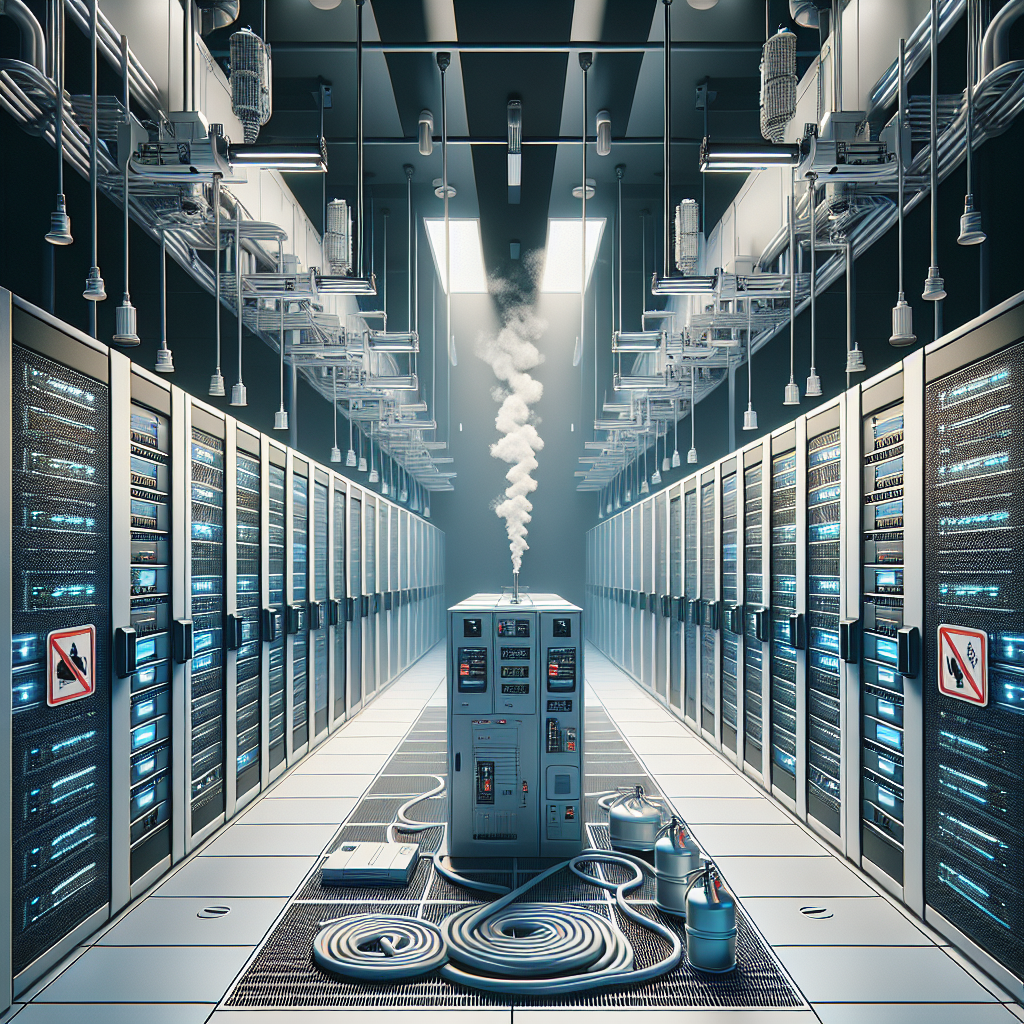Your cart is currently empty!
A Comprehensive Guide to Data Center Fire Suppression Systems

Data centers are crucial components of modern business operations, storing and processing vast amounts of data critical to a company’s success. With the increasing reliance on data centers, the risk of fire is a significant concern. A fire can not only cause damage to equipment and data but also disrupt business operations and result in significant financial losses.
To mitigate the risk of fire in data centers, it is essential to have a comprehensive fire suppression system in place. This system should be designed to quickly and effectively extinguish fires while minimizing damage to equipment and data. In this article, we will provide a comprehensive guide to data center fire suppression systems, outlining the different types of systems available and best practices for their implementation.
Types of Fire Suppression Systems:
1. Water-Based Systems: Water-based fire suppression systems, such as sprinkler systems, are the most common type of fire suppression system used in data centers. These systems work by releasing water onto a fire to extinguish it. While effective, water-based systems can cause water damage to equipment and data, making them less ideal for data centers.
2. Gaseous Systems: Gaseous fire suppression systems use inert gases or chemical agents to extinguish fires. These systems are designed to quickly and effectively suppress fires without causing damage to equipment or data. Examples of gaseous fire suppression systems include FM-200, CO2, and Inergen systems.
3. Foam Systems: Foam fire suppression systems work by releasing a foam blanket onto a fire to smother it. These systems are effective for suppressing Class B fires, which involve flammable liquids and gases. Foam systems are less commonly used in data centers but can be a suitable option depending on the specific fire risks present.
Best Practices for Implementing Fire Suppression Systems in Data Centers:
1. Conduct a Fire Risk Assessment: Before implementing a fire suppression system, it is essential to conduct a thorough fire risk assessment of the data center. This assessment should identify potential fire hazards, such as electrical equipment, overheating servers, and flammable materials, and determine the most appropriate fire suppression system based on the specific risks present.
2. Design a Redundant System: To ensure maximum protection against fires, it is recommended to design a redundant fire suppression system in the data center. This can involve installing multiple fire suppression systems, such as a combination of water-based and gaseous systems, to provide backup protection in the event of a system failure.
3. Regular Maintenance and Testing: It is crucial to regularly maintain and test the fire suppression system to ensure its effectiveness in the event of a fire. This includes inspecting equipment, testing alarms and sensors, and conducting regular drills to train staff on how to respond to a fire emergency.
In conclusion, implementing a comprehensive fire suppression system is essential for protecting data centers from the risk of fire. By understanding the different types of fire suppression systems available and following best practices for their implementation, data center operators can minimize the risk of fire and ensure the safety of their equipment and data.

Leave a Reply